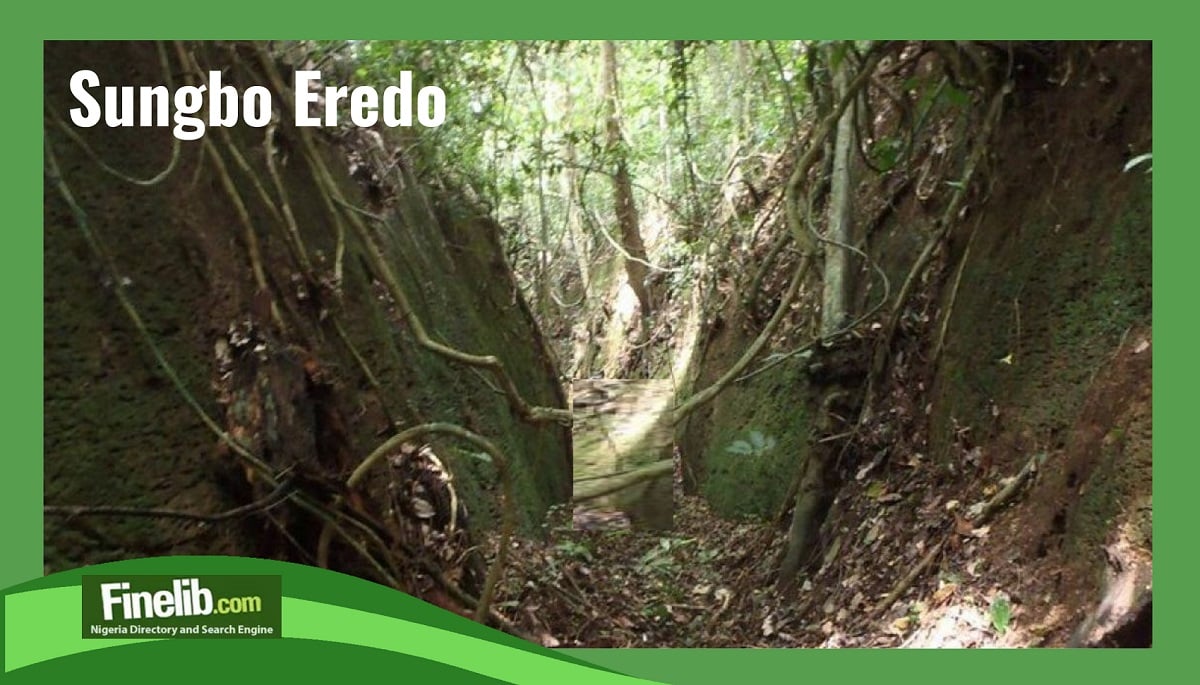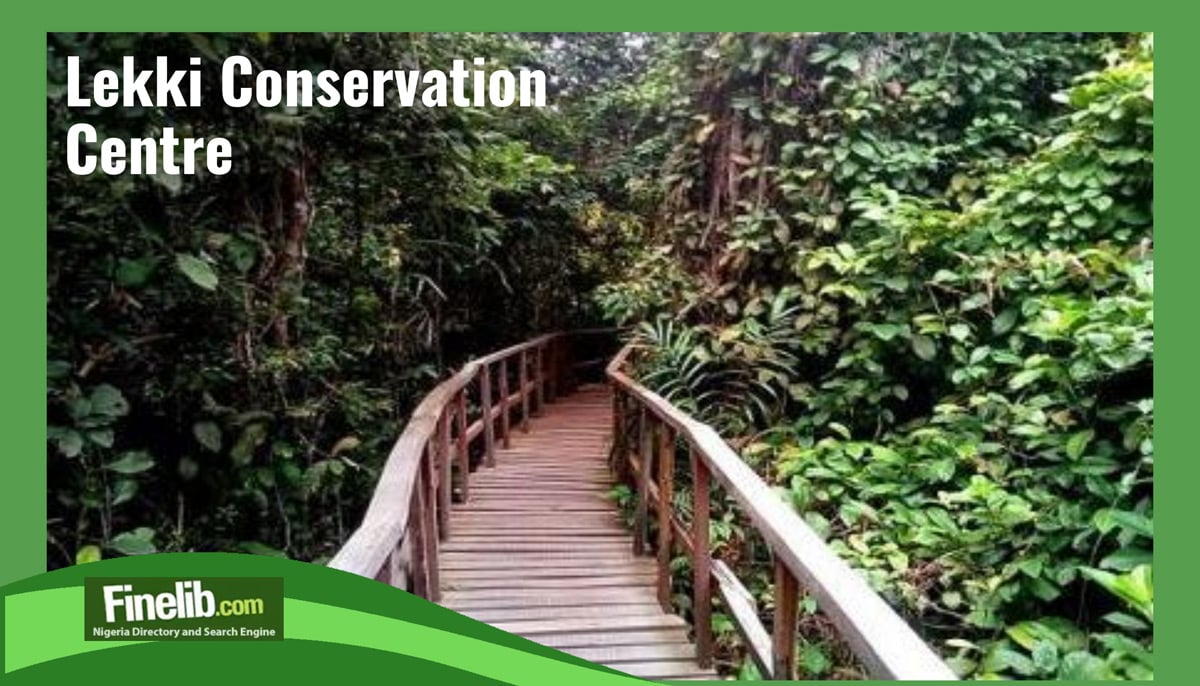Sungbo's Eredo: Unveiling the Enigmatic Walls of Ancient Nigeria

Nestled in the dense rainforest of southwestern Nigeria lies a hidden marvel of ancient engineering and history - Sungbo's Eredo. This enigmatic system of defensive walls and ditches, built between 800 and 1000 AD, has fascinated archaeologists and historians for decades.
Honoring the Ijebu noblewoman Oloye Bilikisu Sungbo, Sungbo's Eredo stands as a testament to the rich and complex civilization of the Yoruba people. This article will unravel the mysteries surrounding Sungbo's Eredo, explore its historical significance, and discover the legends that shroud this awe-inspiring structure.
Unearthing Sungbo's Eredo
A Remarkable Defensive Structure
Sungbo's Eredo stretches over 160 kilometers, making it one of Africa's most extensive artificial structures. The fortifications consist of a meticulously constructed ditch with remarkably smooth walls and an inner bank reaching up to 20 meters.
Laterite, clay, and iron oxide are the main components of these walls. They create a distinctive ring around the historic Ijebu Kingdom, standing apart from the surrounding flora and fauna of the rainforest. The ingenuity and skill required to make such a formidable defensive structure without modern construction equipment are awe-inspiring.
Legends and Myths
The legends surrounding Sungbo's Eredo add an air of mystique to this ancient site. According to the Ijebu clan accounts, erecting the walls was to honor the memory of Bilikisu Sungbo, a prosperous woman who never experienced motherhood.
The magnitude of Sungbo's Eredo, spanning approximately 10 kilometers, challenges the notion that it was solely built by enslaved people or as a personal monument. Intriguingly, some historians have drawn connections between Bilikisu Sungbo and the legendary Queen of Sheba, a figure mentioned in both the Bible and the Quran. This association adds another layer of intrigue and raises questions about the cultural and historical ties between different civilizations.
Exploring the Historical Significance
Unifying the Ijebu Kingdom
Besides serving as a protective barrier, Sungbo's Eredo greatly fostered unity among different communities within the Ijebu Kingdom. Constructed during political confrontation and consolidation in the southern Nigerian rainforest, Sungbo's Eredo mirrored similar fortifications throughout western Nigeria, such as the earthworks surrounding Ifẹ̀, Ilesa, and the Benin Iya.
The people responsible for the construction of Sungbo's Eredo were highly clever. They use water or clay to form a damp section in the lowermost part of the trench. It made the trench even better at protecting them. The sheer scale and complexity of Sungbo's Eredo illustrate the ambition and power of the ancient Ijebu Kingdom.
Precolonial West African Civilizations
Sungbo's Eredo stands as a testament to the advanced civilizations that thrived in West Africa long before the arrival of European colonizers. The archaeological findings within Sungbo's Eredo and other similar defensive structures in Nigeria, such as the Kano walls and the walls of Benin, challenge the misconception that African societies solely relied on outside influence for development.
These walls, built with rudimentary tools and manual labor, demonstrate the sophistication and ingenuity of early African civilizations. They provide valuable insights into these ancient societies' social, political, and military dynamics.
The Journey to Sungbo's Eredo
A Hidden Gem in Nigeria
Visiting Sungbo's Eredo offers a unique opportunity to delve into Nigeria's rich history and natural beauty. Located a few hours' drives from Lagos, Sungbo's Eredo is a hidden gem that awaits intrepid explorers. Given its low tourist popularity, reaching the site might take much work. Seeking assistance from the local community or knowledgeable guides is crucial.
The journey to Sungbo's Eredo takes you through picturesque landscapes, from the bustling city of Lagos to the tranquil village of Epe and finally to the ancient ruins nestled within the verdant rainforest.
Trekking Through History
As you venture into the rainforest, a sense of anticipation builds. The dense foliage envelops you, creating an otherworldly atmosphere. Accompanied by a knowledgeable guide, you traverse the trails that lead to Sungbo's Eredo.
The forest's humidity and dim lighting add to the adventure, heightening the feeling of stepping back in time. Eventually, you arrive at the moat's edge, a profound testament to the engineering prowess of the ancient builders. The moss-covered walls tower above, igniting a sense of wonder and curiosity.
Unveiling the Past
Exploring Sungbo's Eredo allows you to immerse yourself in history. Walking along the once-protective corridors, you can almost hear echoes of the past.
Fallen trees and overgrown vegetation now claim their place within the structure, creating a harmonious coexistence between nature and ancient human ingenuity. As you navigate the site, you may encounter fascinating creatures such as giant millipedes and slumbering bats, reminding you of the vibrant ecosystem that thrives within this historical treasure.
The Legacy of Sungbo's Eredo
A Source of Contemplation and Wonder
Sungbo's Eredo continues to captivate the imagination of scholars, archaeologists, and visitors alike. The ongoing research and preservation efforts, supported by UNESCO and dedicated British and Nigerian archaeologists, shed light on the significance of this ancient structure.
As more secrets unravel, Sungbo's Eredo stands as a testament to human achievements, prompting contemplation on the ingenuity and resilience of our ancestors.
A Pilgrimage Site
Sungbo's Eredo holds deep spiritual significance for many Nigerians. The nearby tomb of Bilikisu Sungbo serves as a pilgrimage site for Muslims and Christians. Visitors flock to this sacred place, leaving offerings and seeking blessings.
The site carries a sense of reverence and awe as believers pray for fertility, protection, and spiritual guidance. Sungbo's Eredo has become a beacon of faith and cultural heritage, attracting devotees from near and far.
Preserving Sungbo's Eredo
The Need for Conservation
Sungbo's Eredo, despite its historical and archaeological significance, receives limited attention and funding from the state and federal governments in Nigeria. The site's preservation and maintenance face challenges due to a need for more resources.
However, the UNESCO World Heritage status and the collaborative efforts of dedicated researchers offer hope for conserving this irreplaceable cultural heritage.
Promoting Sustainable Tourism
Responsible and sustainable tourism practices become crucial as Sungbo's Eredo gains recognition as a tourist attraction.
Balancing the site's preservation with the desire to share its wonders with visitors is paramount. Local communities, tour operators, and government agencies can work together to develop sustainable tourism initiatives that protect Sungbo's Eredo while benefiting the surrounding communities.
Activities at Sungbo's Eredo
At Sungbo's Eredo, there are a variety of activities that you can engage in to make the most of your visit. Here are a few suggestions:
1. Exploring the Walls: Stroll along the ancient walls of Sungbo's Eredo. This UNESCO World Heritage site spans over 160 kilometers and offers a fascinating glimpse into the rich history and culture of the area.
2. Guided Tours: Join a guided tour to learn more about the significance of Sungbo's Eredo and its historical importance. With the help of knowledgeable guides, it will enhance your visit by sharing intriguing information and captivating stories.
3. Photography: Bring your camera and capture the stunning views and architectural wonders of Sungbo's Eredo. The intricate details of the walls and the surrounding landscape offer plenty of opportunities for breathtaking photographs.
4. Picnic and Relaxation: Pack a picnic and enjoy a leisurely lunch amidst the serene surroundings of Sungbo's Eredo. Find a shady spot and unwind while taking in the peaceful atmosphere.
5. Bird Watching: Sungbo's Eredo is home to various bird species, making it an excellent spot for birdwatching enthusiasts. Grab your binoculars and watch for colorful birds flitting around the area.
6. Cultural Events: Check the local calendar for upcoming cultural events or festivals at Sungbo's Eredo. These events provide a unique opportunity to immerse yourself in the local traditions and customs.
Remember to respect the site and follow any rules or regulations put in place to preserve the historical integrity of Sungbo's Eredo. Enjoy your visit and make lasting memories at this great archaeological site.
How to Get There
Getting to Sungbo's Eredo, a historical monument in Nigeria, requires some planning. Here are the general steps to help you get there:
1. By Air: The closest major airport to Sungbo's Eredo is Murtala Muhammed International Airport in Lagos, Nigeria. You can hire a taxi or public transportation to reach the monument.
2. By Road: Sungbo's Eredo is located in Ijebu-Ode, approximately 80 kilometers northeast of Lagos. You can hire a car or take a taxi from Lagos to Ijebu-Ode. The journey usually takes around two to three hours, depending on traffic.
3. Local Transportation: Once you reach Ijebu-Ode, you can hire a local taxi or use public transportation, such as minibusses or motorcycles, to get to Sungbo's Eredo. Ask for local directions or utilize a reliable navigation app to locate the monument.
4. Entrance and Guided Tours: Sungbo's Eredo is open to visitors, and there might be an entrance fee to access the site. Make sure you check the visiting hours and any restrictions before your visit. Consider hiring a local guide to provide information and insights about the monument's history.
Conclusion
Sungbo's Eredo stands as a testament to the ingenuity, power, and cultural heritage of the ancient Yoruba people. This remarkable defensive structure, shrouded in legends and myths, offers a glimpse into the rich history of West Africa.
As visitors embark on the journey to Sungbo's Eredo, they enter a realm where the past converges with the present, where nature intertwines with human creation. Preserving and appreciating Sungbo's Eredo ensures that future generations can marvel at this awe-inspiring testament to the ingenuity and resilience of our ancestors.




